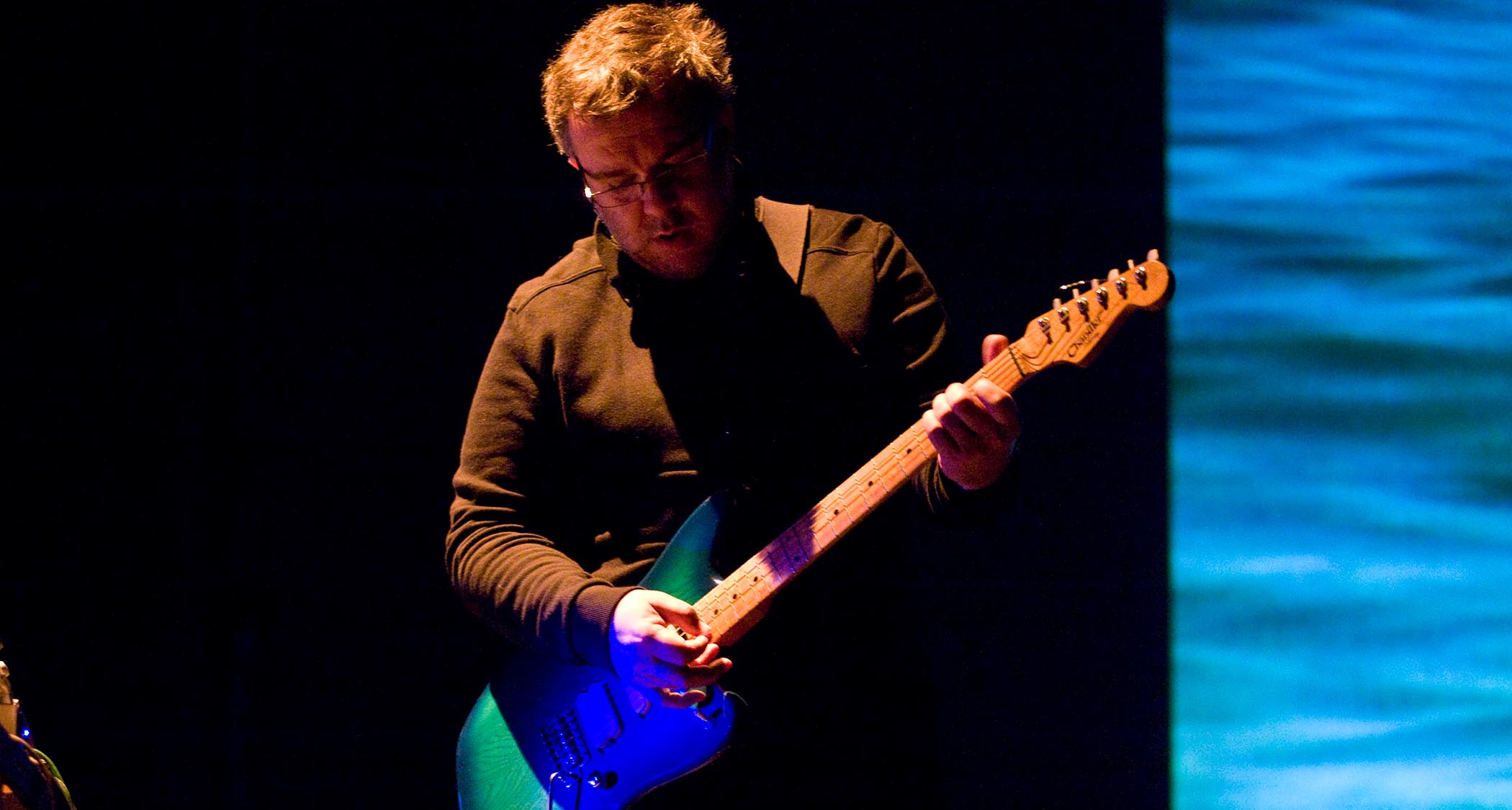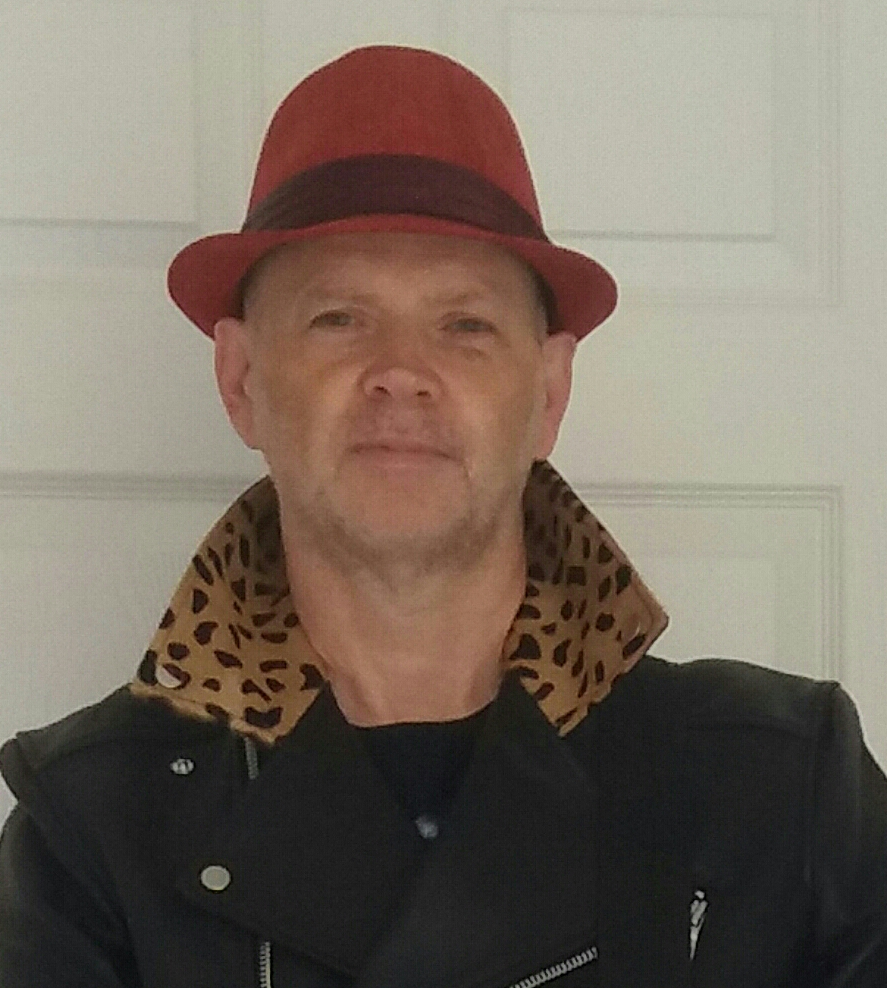“I couldn’t do all the licks and Jimmy Page stuff. By not being able to play properly and discovering echo units, I came upon some monstrous sounds, purely by accident”: Robin Guthrie on how he conjured the haunting tones of Cocteau Twins
With The Moon and the Melodies remastered and reissued, the architect of the lushest sounds committed to tape reflects on the effects experimentation and accidental magic of the quintessential 4AD band

When Cocteau Twins released their debut album, Garlands, in 1982, their unique sonic signature immediately marked out guitarist Robin Guthrie as a new kind of guitar hero – a player who seemed to have traded traditional, blues-based pentatonic riffing and soloing for minimalist soundscapes.
As a result, their music was simultaneously spacey and spatial; Guthrie created vast canyons of delay-drenched arpeggios that provided the backdrop for Elizabeth Fraser’s singular vocal stylings.
When Cocteau Twins split in 1997, Guthrie went on to release a series of solo and collaborative albums, including a number of collaborations with composer Harold Budd.
One of them – 1986’s The Moon and the Melodies, which was credited to Budd, Fraser, Guthrie and Cocteaus bassist Simon Raymonde (making it the first meeting of the minds between the Scottish gothic dream popsters and the American avant garde experimentalist) – has just been re-released. Guthrie was initially taken by surprise by the reissue.
What was the thinking behind re-releasing The Moon and the Melodies?
“I didn’t get a choice. [Laughs] I didn’t choose to rerelease it, but I did get involved on the understanding that I could get access to the original tapes for the remastering. It’s not one of those ‘remastered from the original CD’ situations.
“I get really annoyed when people comment on how I moved guitars around in the mix or whatever when I’ve remastered my old stuff. Remastering’s not re-mixing, you know? [Laughs] The tapes were in a bit of a state; we had to give them some TLC to get them back to sounding as good as they had been.”
All the latest guitar news, interviews, lessons, reviews, deals and more, direct to your inbox!
It was just a bunch of folks going into the studio and trying something – and that’s exactly what it sounds like to me. There was no planning or anything before we went in
How did you come to start working with Harold Budd?
“Everything was a personal connection with him. I’d heard his name but didn’t really know his music. We met several times in a social setting before we ever got into the studio. It was Ivo’s idea [Ivo Watts-Russell, founder of 4AD, the band’s label]; he was a big fan of Brian Eno, who Harold had worked with.
“He got us to hang out, and then one thing led to another; we got on very well. He had been spending time in London at that point, which helped it to happen. Also, the fact that we seldom spoke about music helped me as well.”
How do you view it looking back?
“It’s an odd record. In terms of it being a Cocteau Twins record, it’s funny that over the years it isn’t described as such, yet when I got the tape boxes it said, ‘Cocteau Twins and Harold Budd’ on them.
“I suppose, conceptually, it didn’t fit with what we were doing. It was just a bunch of folks going into the studio and trying something – and that’s exactly what it sounds like to me. There was no planning or anything before we went in.”
What got you into music – and who were your influences?
“There was no guitarist in particular that I wanted to emulate. My school friends had got guitars and had learned some songs, and it made me really want to be in a band. I couldn’t do all the licks and Jimmy Page shit. I played the bass and tried drums, but I was worse than useless.
“It all helped me later, though, when I found the drum machine. Being an adolescent in the ’70s, music took up a lot of space. Without the internet, PlayStations, phones and other distractions, your choice of music went some way to defining you. I went through pop, glam, R&B – the high-energy stuff like Dr. Feelgood, before punk came along, when I realized I didn’t even have to learn to play properly to be making music.
“I had avoided regular rock and prog and stuff as I probably just wanted to annoy my older brother who had long hair. Of course, none of those genres show up at all in the way I play guitar or the music I’ve made. I cannot explain that. [Laughs]”
What was your guitar journey, from beginner to actually making records?
“I started out on a Kay from a catalog. It was my brother’s, really. He’d got it as a birthday present but never really learned how to play it, so it was just stuck under the bed and I’d sneak in to try to play it.
“It wasn’t much better than a plank with some strings on it. It wasn’t even a copy of a recognized guitar; it looked a bit like a Teisco in two-tone red, but less classy, if that’s possible. [Laughs] After that it was a Kawai, another cheap Japanese guitar, which I used for Garlands. I had a Gordon Smith that I used for a while after that, but the main guitar I used with the Cocteau Twins was a ’59 Fender Jazzmaster, which I’ve still got.”
What triggered your love of effects?
“I was into electronics and early computing. I was always into soldering and putting things together. Combine that with not being able to play properly and discovering echo units. I thought it was amazing and no-one else had ever done it. [Laughs] I didn’t really know about what order you should connect things up in a chain, so I came upon some monstrous sounds, but purely by accident.”
When you got together with Liz Fraser and Will Heggie to form Cocteau Twins, did you know what kind of band you wanted to put together, or was it just an organic thing?
“Recently I found some cassette tapes of our early rehearsals; what is really interesting is that we sounded the same from day one. I wanted that big sound. I suppose I was steering the band toward the sounds we had, and Will Heggie was also a big part, putting his bass through delay pedals.
“I think there was something of a Phil Spector vibe that I was trying to channel. It wasn’t that I wanted to sound like his records in the ’60s, but more that I wanted the sound of my records to give you the same kind of chill and to sound equally massive.”
I wanted that big sound. I suppose I was steering the band toward the sounds we had, and Will Heggie was also a big part, putting his bass through delay pedals
When you were prepping songs for the studio, did you do a lot of planning in terms of how you’d layer your parts and effects?
“From Head Over Heels [1983] onwards, Ivo basically just trusted us to do what we wanted in the studio. We had the confidence of naïveté, almost. For the first records, we’d been in the studio with other people, and when he asked us if we were ready to make Head Over Heels, we just said yes, even though we didn’t really have any material before we started to record. I was comfortable with experimentation and utilizing the technology of the studio.”
Once Cocteau Twins came to an end, your next move was to release your first solo album, Imperial, in 2003. Had you been planning to make a solo record and preparing material over the years?
“I always shudder when I hear people making a distinction between what I did in the Cocteau Twins and on my solo records. For me there was no difference at all; I just showed up in the studio and did what I’d always done.
“Some of the tracks for Imperial would have been Cocteau Twins songs if we hadn’t broken up. The last recordings I did for the band turned out to be the first things I recorded for Imperial.”
When you’re putting together the solo instrumental stuff, what’s the process?
“What kickstarts my music is getting out of the studio and traveling a lot. I get inspired by a lot of things I see. I’m also a great lover of photography; I do the pictures for all of my album covers.
“I’ll keep notebooks full of ideas of things I want to do. I always know what I want the first and last tracks to be before I finish an album. That’s a key thing for me. The songs all have to seem like they belong together on an album.”
What’s coming up?
“I’ve been releasing tracks that I never used over the years – songs that didn’t fit on an album or fell through the cracks. There are a couple of EPs coming soon. I remember, way back, when the record company would tell me we needed to record some songs for B-sides, and I always wondered to myself how I would do that.
“I knew how to go and record the best song that I could, but I didn’t know how to go and do something that was somehow deliberately ‘lesser’. [Laughs] I’ve always believed that if something was going to have my name on it, I’d want it to be the best it can be.”
- The Moon and the Melodies is out now via 4AD.
Mark is a freelance writer with particular expertise in the fields of ‘70s glam, punk, rockabilly and classic ‘50s rock and roll. He sings and plays guitar in his own musical project, Star Studded Sham, which has been described as sounding like the hits of T. Rex and Slade as played by Johnny Thunders. He had several indie hits with his band, Private Sector and has worked with a host of UK punk luminaries. Mark also presents themed radio shows for Generating Steam Heat. He has just completed his first novel, The Bulletproof Truth, and is currently working on the sequel.








